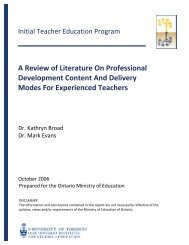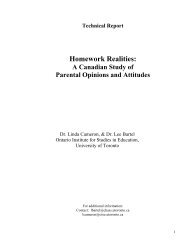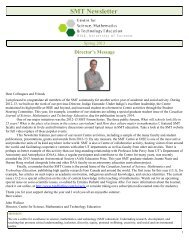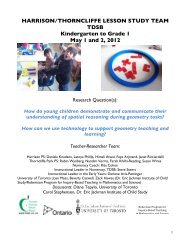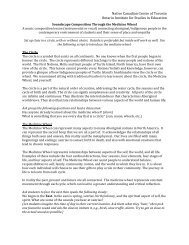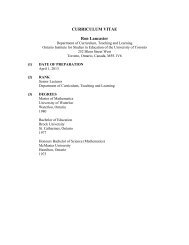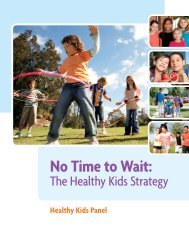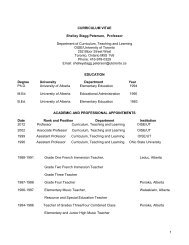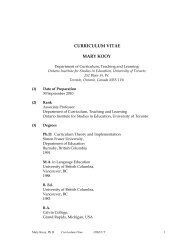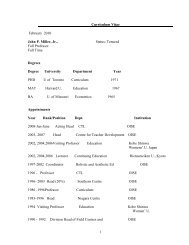The Ontario Curriculum, Grades 9-12 - Ministère de l'éducation ...
The Ontario Curriculum, Grades 9-12 - Ministère de l'éducation ...
The Ontario Curriculum, Grades 9-12 - Ministère de l'éducation ...
Create successful ePaper yourself
Turn your PDF publications into a flip-book with our unique Google optimized e-Paper software.
E1.2 propose a course of practical action to improve the sustainability of an energytransformation<br />
technology (e.g., solar panels, internal combustion engines, fuel cells, air<br />
conditioners) [PR, AI, C]<br />
Sample issue: Although wind is a renewable source of energy, many windmills are<br />
nee<strong>de</strong>d to generate a useful amount of energy, and large wind farms can have a negative<br />
impact on wildlife and local resi<strong>de</strong>nts. Researchers are experimenting with modifications<br />
to the bla<strong>de</strong>s to increase the efficiency of each windmill.<br />
Sample questions: Why are ice-cooling systems more energy efficient than traditional air<br />
conditioners? How could solar panels be modified to enable them to capture solar energy on<br />
a cloudy day? How could a speaker system be improved to maximize its energy use? What<br />
modifications could be ma<strong>de</strong> to an internal combustion engine so that it used less gasoline?<br />
E3. Un<strong>de</strong>rstanding Basic Concepts<br />
E3.4 compare the efficiency of various systems that produce electricity (e.g., wind farms,<br />
hydroelectric generators, solar panels), using the law of conservation of energy, and<br />
outlining the transformations, transmissions, and energy losses involved<br />
E3.5 <strong>de</strong>scribe a variety of renewable and non-renewable sources of energy (e.g., solar energy,<br />
fossil fuels, hydroelectric energy, energy generated from biomass), and i<strong>de</strong>ntify the<br />
strengths and weaknesses of each<br />
F. Hydraulic and Pneumatic Systems<br />
F1. Relating Science to Technology, Society, and the Environment<br />
F1. analyse the <strong>de</strong>velopment of technological applications related to hydraulic and pneumatic<br />
systems, and assess some of the social and environmental effects of these systems<br />
SCIENCE<br />
Science, Gra<strong>de</strong> <strong>12</strong>, University/College Preparation (SNC4M)<br />
C. Pathogens and Disease<br />
C3. Un<strong>de</strong>rstanding Basic Concepts<br />
C3.6 <strong>de</strong>scribe some of the means used by international non-governmental organizations (e.g.,<br />
Mé<strong>de</strong>cins sans Frontières, Oxfam, Ryan’s Well Foundation, UN agencies, the Stephen<br />
Lewis Foundation) to control the spread of disease (e.g., distribution of vaccines,<br />
medication, malaria nets; installing wells so people have access to clean water; public<br />
education on strategies for transmission prevention)<br />
E. Science and Public Health Issues<br />
E3. Un<strong>de</strong>rstanding Basic Concepts<br />
E3.3 explain the impact of various threats to public health, including infectious diseases (e.g.,<br />
hepatitis, HIV/AIDS, tuberculosis, malaria, sexually transmitted diseases), chronic<br />
152 Environmental Education, <strong>Gra<strong>de</strong>s</strong> 9−<strong>12</strong>: Scope and Sequence of Expectations, 2011



